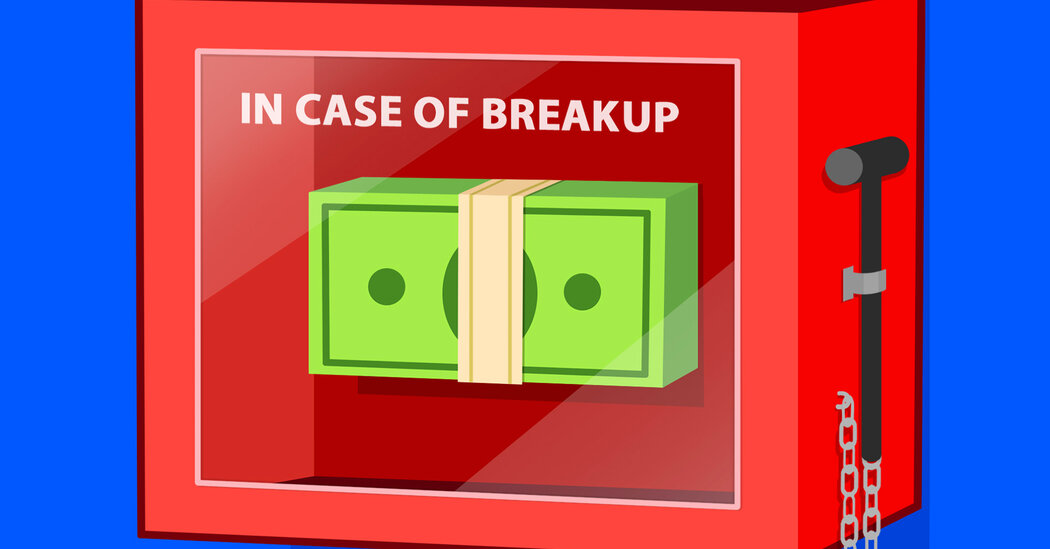Bank of England Raises Rates More Than Expected, as Inflation Persists
The Bank of England raised interest rates half a percentage point on Thursday, a larger-than-expected move, as policymakers struggle to bring down Britain’s persistently high rate of inflation.
The central bank’s rate-setting committee lifted rates for a 13th consecutive time, to 5 percent, the highest since early 2008. The move is likely to intensify fears about the depth of Britain’s cost-of-living crisis, as homeowners prepare for jumps in monthly mortgage payments while millions of households already struggle to pay higher energy and food bills.
It also adds to the pressure on the government of Prime Minister Rishi Sunak, who promised to halve inflation and expand the economy this year, two pledges that are now in doubt.
The bank raised rates a day after the latest inflation data underscored its challenge: Consumer prices rose 8.7 percent in May from a year earlier, the same pace as the previous month, instead of falling as economists had predicted.
The Bank of England’s half-point increase was in sharp contrast with some of its international peers. Last week, the Federal Reserve decided to hold interest rates steady, at a range of 5 to 5.25 percent, and the European Central Bank raised rates a quarter point.
“The economy is doing better than expected, but inflation is still too high and we’ve got to deal with it,” Andrew Bailey, the Bank of England governor, said in a statement on Thursday. “We know this is hard — many people with mortgages or loans will be understandably worried about what this means for them. But if we don’t raise rates now, it could be worse later.”
Indeed, there is accumulating evidence that inflation will be harder to stamp out than previously expected. In the past week, data have shown that pay in Britain has increased faster than forecast, inflation in the services sector has accelerated and food inflation is still near the highest level in more than 45 years.
Recent data have “indicated more persistence in the inflation process, against the background of a tight labor market and continued resilience in demand,” the minutes of the committee’s meeting said.
Mr. Bailey said in a television interview on Thursday that inflation is expected to fall more sharply later this year — but for that to happen, the current pace of wage growth can’t continue. Nor can companies keep pushing prices up to rebuild profit margins. It’s important that companies adjust the growth of wages and prices to reflect inflation coming down, he said, “because the current levels, I’ll be absolutely honest, are unsustainable.”
On Thursday Mr. Sunak said his promise to halve the inflation rate would require difficult decisions but was not impossible. “I’m totally 100 percent on it, and it is going to be OK and we are going to get through this,” he said at an event in Kent.
The stubbornness of inflation and rising mortgage rates cast a cloud over the Conservative government, which is trailing the Labour Party by double digits in opinion polls ahead of a general election that is expected in the second half of 2024.
Mr. Sunak hoped to get bad economic news out of the way quickly this year, but his two key economic objectives — cutting inflation and expanding the economy — may be in contradiction if the central bank’s fight to curb inflation forces interest rates high enough to push the economy into recession.
The British central bank has pushed through a drastic tightening of monetary policy in the last year and a half, raising interest rates from near zero, to restrain the economy. But as British inflation data continues to take policymakers and other economists by surprise, traders are betting that the bank will have to raise interest rates higher and for longer to get inflation down to the 2 percent target. After the policy decision was announced on Thursday, traders were betting interest rates will reach 6 percent by the end of the year.
The persistent price pressures in Britain are causing turmoil in the mortgage market. Traders have pushed up yields on government bonds, and as mortgage offers reflect those higher interest rates, homeowners are growing concerned about jumps in their monthly payments. Recently, some lenders pulled mortgage deals in response to the rapid changes in the market.
On Thursday, the central bank said it was closely monitoring the impact of its “significant” increases in interest rates, noting that because more people have fixed terms on their mortgages, the full impact of higher interest rates “will not be felt for some time.”
About 80 percent of mortgage holders have fixed-rate terms now, up from about a third a decade ago. By the end of the year, about 1.3 million households are expected to reach the end of their fixed-rate term, prompting a reset in the rate that applies to their loan, the Bank of England said last month.
Last weekend, the average rate for a two-year fixed-rate mortgage hit 6 percent for the first time this year.
The extra financial burden on mortgage payers compounds the stubborn cost-of-living crisis, as inflation has outpaced pay for a year and a half. About two-thirds of adults in Britain said their cost of living had increased in June from a month earlier, and almost all of them said it was because of the higher cost of grocery shopping, according to a survey by the Office for National Statistics.
Conservative lawmakers are becoming increasingly concerned about the financial squeeze of rising mortgage rates on many of the voters whose support they need in the next election.
At talks scheduled for Friday, the government is expected to push lenders to explore all options to support people struggling with mortgages, including lengthening loan terms or changing their conditions.
There is a lot pressure on Mr. Sunak because of the growing risk that in the run-up to the next election, the government faces high interest rates, low economic growth, persistent inflation and a subdued property market. With borrowing costs rising, the government’s ability to offer tax cuts or other pre-election inducements to voters could be seriously constrained.
Two members of the Bank of England’s nine-person rate-setting committee, Swati Dhingra and Silvana Tenreyro, voted to hold interest rates flat at 4.5 percent, arguing that past rate increases were still working through the economy and the bank was at risk of tightening policy more than necessary. They also said forward-looking indicators suggested that inflation and wage growth would fall significantly.
But they were outvoted by the seven other members, who were concerned that the impact on domestic prices and wages from external shocks, such as the war in Ukraine, would take longer to fade than they did to emerge. They predicted that lower wholesale energy prices would bring down the headline rate of inflation later in the year, but that services inflation, which is dominated by companies’ wage costs and reflect domestic price pressures, would be “broadly unchanged” in the short term.
As prices in Britain have continued to rise faster than expected, and faster than in the United States and Western Europe, the Bank of England has come under increasing scrutiny. Last month, the central bank’s governing body decided to commission “a broad review” into the institution’s “forecasting and related processes during times of significant uncertainty.”
Stephen Castle contributed reporting.


